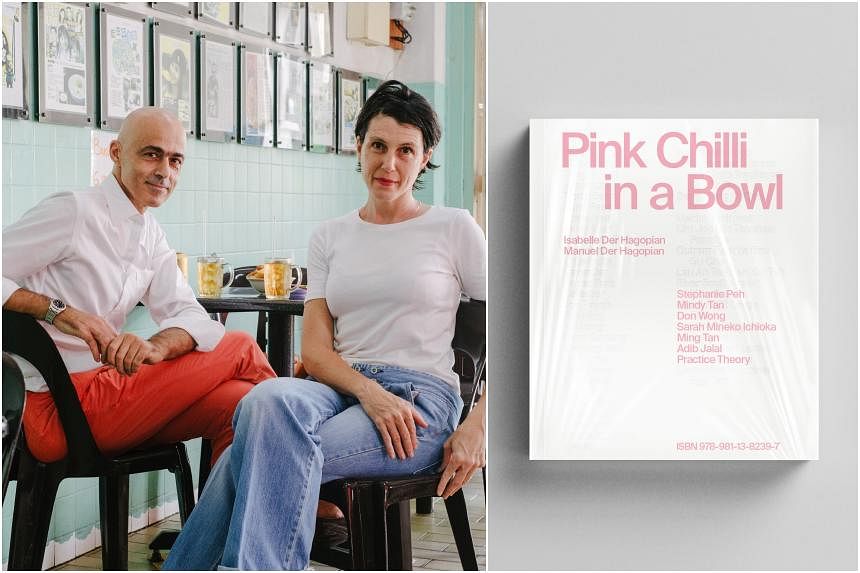SINGAPORE – Food – always a juicy topic in Singapore – and architecture come together in a new book which explores in a delicious way how family-run eateries are interconnected with people, streets and landmarks.
Pink Chilli In A Bowl, a 478-page paperback by Swiss author and doctor Isabelle Der Hagopian, will be launched at Wardah Books in Kampong Glam on Sunday as part of Singapore Archifest 2023.
The signature annual festival of the Singapore Institute of Architects, which is on till Oct 28, features more than 80 events starting from the Kampong Glam heritage district and fanning out across the island.
Its theme for 2023 is “Interim: Acts of Adaptation” which is about the built environment being in a state of constant flux. This allows for adaptation to address current urban issues.
Pink Chilli In A Bowl, put out by local independent publishing house Pagesetters Services, also includes essays and works by photographers and designers.
The essays – by author Sarah Mineko Ichioka, urbanist Adib Jalal and food presenter Ming Tan – about Singaporean eateries shed light on the socio-cultural context of the places featured.
Der Hagopian, 50, who has lived in her native Switzerland as well as in South-east Asian cities such as Ho Chi Minh over the past 20 years, says: “I have always explored the cities where I live, in depth, to make them my own, and my focus has been on people, food and places. The eateries in Singapore were a good starting point to piece together my pastiche.”
She has been in Singapore since 2018.
She worked with her husband and co-author Manuel Der Hagopian, 52, from 2020 to 2022 to complete her list of dining hot spots for the book.
They then assembled a core team comprising photographers, writers and designers, before taking the project to Pagesetters Services.
She says streets are a crucial element of any city as they embody a large part of public life and the changing nature of a city.
The book presents a fresh appreciation of urban spaces in Singapore, conceived as “constellations” and “stars” built around food establishments.
According to the book, there are networks, termed constellations, of social spaces linking eateries and confectioneries, such as dessert stalls and bakeries, with architectural landmarks and places of worship.
The popular places within each constellation are within a walking distance of 20 to 40 minutes.
Architectural landmarks such as Housing Board blocks, temples, churches and historical monuments are included with the hawker haunts to offer a sense of place, as well as invite the public to ponder over the built environment.
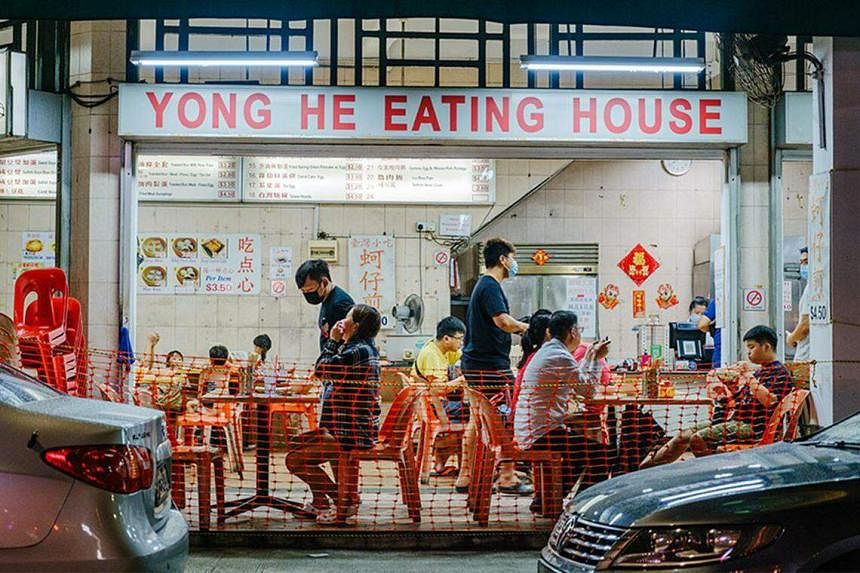
Among the 28 constellations mentioned are the neighbourhoods of Tiong Bahru and Simpang Bedok.
In the book, stars are defined as foodie haunts that have no perceivable links to towns but are popular, such as Lim Joo Hin Eating House in Havelock Road and Lau Ah Tee Bak Kut Teh in Whampoa West.
There are 12 stars which include Outram Park Ya Hua Rou Gu Cha at PSA Tanjong Pagar Complex in Keppel Road and Seng Hong Coffee Shop in Lengkok Bahru, Redhill.
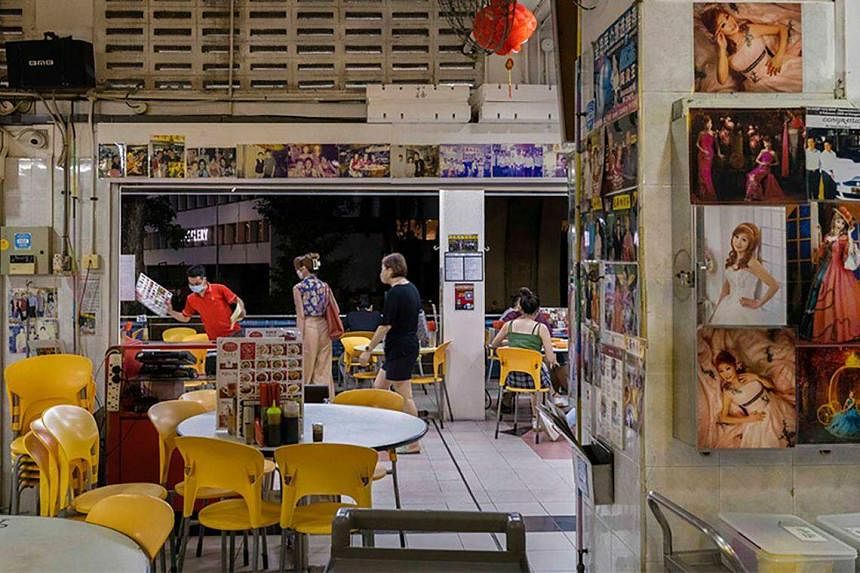
A practising general practitioner for 25 years in clinics and medical centres in Switzerland and South-east Asia, Isabelle Der Hagopian says she is fascinated by the street food and culture of Asian cities.
In 2010, she co-authored Nancy Chandler’s Map Of Hanoi, one of many popular South-east Asia city guides started by the late American artist in 1974.
Her next project is a study of market typologies in old Saigon, renamed Ho Chi Minh City in 1975.
Her husband, co-founder of Geneva-based G8A Architects with branch offices in Singapore and Vietnam, helped flesh out the content based on her raw data and sketches.
Why the title Pink Chilli In A Bowl?
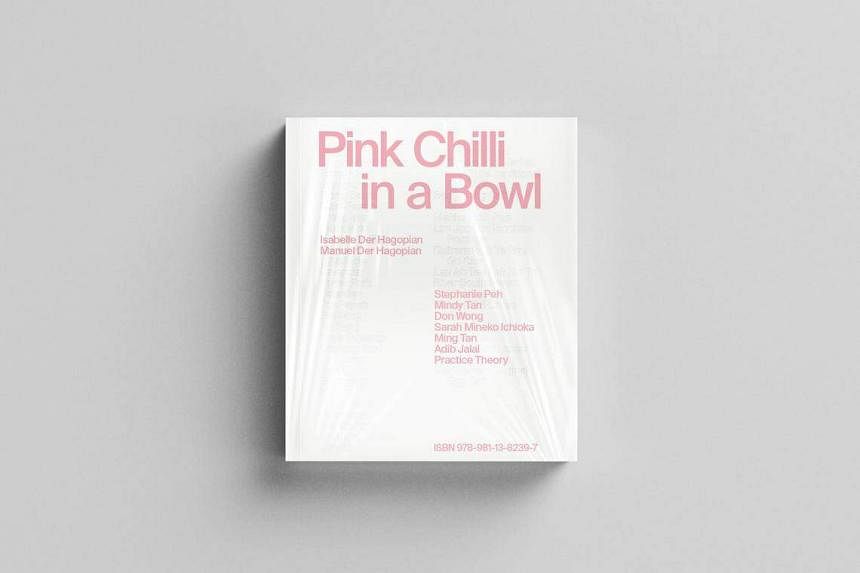
“We started with something that is ubiquitous which is chilli paste or cut chilli in a pink melamine bowl, before noodles and soup are ladled in,” recalls Isabelle Der Hagopian.
Her husband adds: “But we shifted the word to coin the title ‘Pink Chilli In A Bowl’ in a nod to the surrealist art movement – to see things differently and challenge visual notions of commonplace items.”
Mr Ng Kah Gay of Pagesetters Services, who started working with the Hagopians in 2022, says it was instinct that drew him to the book project.
“The seed of the project was always the eateries, the food, the people who gather around the eateries. The authors and collaborators, including Pagesetters, became part of the ecology radiating from this seed,” says Mr Ng, who helms the publishing firm, a content specialist focusing on collaborative projects, as well as Ethos Books, a literary imprint that supports literature, the arts and culture in Singapore and South-east Asia.
According to book contributor Ichioka, the eateries featured should be understood within their social, environmental, historical and policy contexts.
The strategist, urbanist and founding director of Desire Lines, a consultancy for environmental, cultural and social-impact organisations and initiatives, says: “The five essays I wrote were aimed at allowing the reader to appreciate how the eateries are implicated in larger forces that influence their continuing relevance and survival.”
She was also one of the speakers at the recently concluded Archifest Conference on Oct 2, as part of a panel that included leading urban thinkers such as Mr Andra Matin from Indonesia and Ms Momoyo Kaijima from Japan.
“Our urban environment is the outcome of inherited legacies as well as calibrated policies, the latter being more strongly evident in Singapore than in many other cities,” adds Ichioka.
“These histories and intentions have created the ecosystem within which the eateries of Pink Chilli operate. My essays seek to make visible these connections, complementing the spatial constellations identified by Isabelle and Manuel.”
Isabelle Der Hagopian also hopes to address a few misconceptions about Singapore through her book.
“I’ve heard from expatriates who stay here as well as travellers from overseas that they find Singapore too ‘boring’ or ‘aseptic’, which I think is totally wrong, and I hope my views debunk that,” she adds.
“The other point I want to make with this project is that I hope Singaporeans and long-term residents become more inspired to explore streetscapes around the city-state and create their own constellations and stars to share with others.”
Info: The book, priced at $150, will be in local bookstores such as Wardah Books (58 Bussorah Street) and Basheer Graphic Books (04-19 Bras Basah Complex, 231 Bain Street) after its launch on Sunday. For pre-orders, go to pinkchilli.sg
5 Singapore Archifest highlights
In line with its 60th anniversary, the Singapore Institute of Architects presents its 17th edition of Singapore Archifest (AF) with a month-long line-up of programmes which ends on Oct 28. The more than 80 events look at the adaptability of Singapore’s built environment in response to pressing issues as the city evolves.
Here are some highlights showcasing experimentation and discovery.
1. Patricio Guzman’s Chile Trilogy screening

In line with AF’s theme, “Interim: Acts of Adaptation”, The Projector and the Embassy of Chile in Singapore present documentarian and activist Patricio Guzman’s Chile Trilogy.
The first film in the trilogy, Nostalgia For The Night (2010), has already been shown, but you can still catch the final two films at The Projector at Golden Mile Tower.
In The Pearl Button (2015) and The Cordillera Of Dreams (2019), Guzman presents the country’s formidable geography as a witness to its constant state of transition and adaptation.
Info: Catch The Pearl Button on Sunday at 5.30pm and The Cordillera Of Dreams on Oct 15 at 5pm at The Projector, 6001 Beach Road, Golden Mile Tower. Get tickets, priced from $11 to $15, at theprojector.sg/themes/archifest
2. Narratives: Explore Living Perspectives, One At A Time
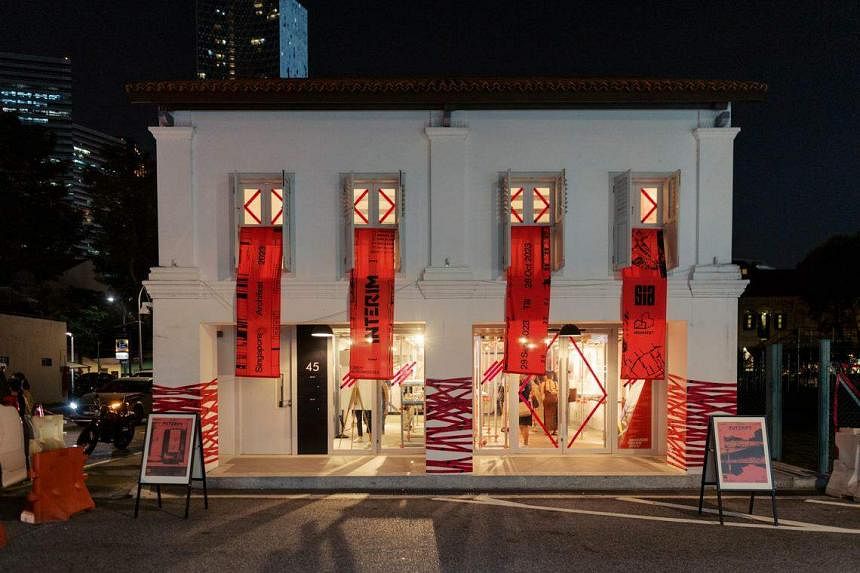
This “human library” experience takes festivalgoers beyond the ordinary pages of a book to a “book of life” itself. Participants will get to talk to any three that they select out of five speakers. These three will interact with participants as human “books”, showcasing not just career stories in design but also the unique lives of people who received architectural training.
Some of the speakers lined up include Ms Theresa Lee, vice-president of product development and design at Capitaland Development, and Mr Chu Yang Keng, founder of Singapore-based regional practice IX Architects.
Info: Saturday, 12.30 to 3pm, Festival House, Level 2, 45 and 47 Sultan Gate. Free registration at narrativeshumanlibrary.peatix.com
3. Archicraft
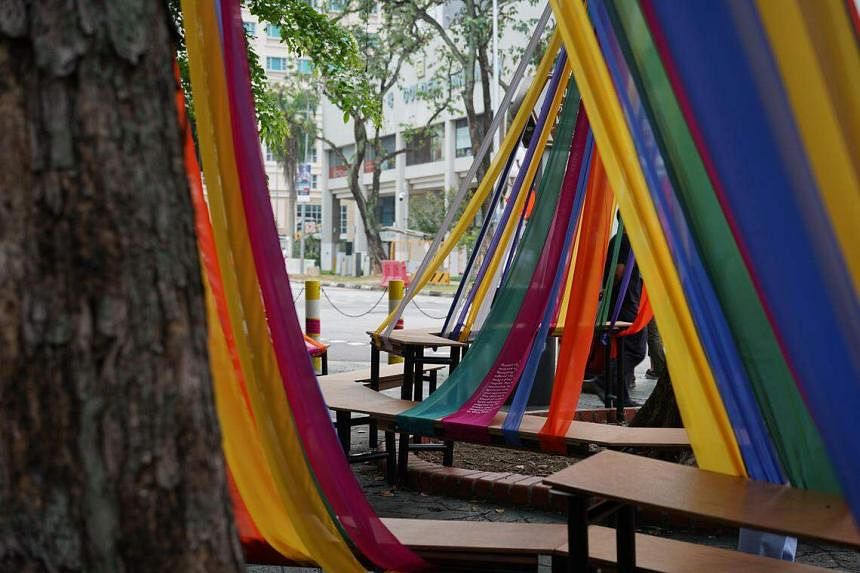
Get hands-on at Archicraft, a series of fun, creative crafting workshops run by students of Singapore University of Technology and Design’s Architecture and Sustainable Design Pillar.
2023’s workshops explore adaptive techniques and reveal the histories of traditional local materials and landscapes.
Workshop leaders will hold short familiarisation tours around Kampong Glam before conducting craft sessions. Learn to make mosaic pieces from the ashes of discarded materials, create batik pieces or try your hands at the Japanese art of paper-cutting.
Info: Various workshops on Oct 21 and 22 at Curbside Crafters, Level 2, 730 North Bridge Road. To register, go to archifest.sg/programmes/archicraft
4. AF Play!
For the first time, AF collaborates with Hidden Singapore – a team of heritage enthusiasts who leverage technology to bring Singapore’s history to life – for an immersive, outdoor exploration game in Kampong Glam.
Participants are guided by a WhatsApp chatbot to discover the hidden stories of the urban district in a game setting.
Info: Happening across Kampong Glam until Oct 28. Free admission. Starting point to be released upon registration at hidden.sg/pages/af-play-signup
5. OH! Open House Artist Talk: Intersections Between Art, Culture And Spirituality
Artist Erzan Adam, who is also a fine arts educator at Lasalle College of the Arts, shares insights from his residency project, Risalah (“Message” in Arabic).
It takes the form of a pamphlet with his sketches and personal reflections, highlighting stories from his conversations with the isolated and marginalised in Kampong Glam.
Some of these people include those selling attar (perfume without an alcohol base) and trinkets on the streets of the heritage district.
Info: Saturday, 7.45 to 8.45pm, Wardah Books, 58 Bussorah Street. Free; register at bit.ly/3tiKJSg
